
It’s that time of year when the summer doldrums begin and the surface bite shuts down. What better time to get serious about bottom fishing and start putting more big groupers in the boat! Grouper fishing in Miami is one of those satisfying endeavors which takes a bit of time to perfect, but once you’ve got these stubborn (and delicious) reef critters in check, you’ll enjoy constant success and plenty of fresh fish dinners. We’ve experimented with a variety of grouper fishing techniques all over the world but always find ourselves falling back to these five surefire grouper fishing techniques which are tried and true. If you’re looking to step up your grouper fishing game, then this article is for you.
Find Habitat That Holds Fish
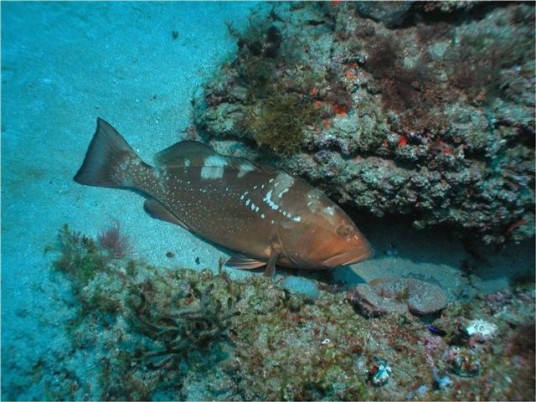
It’s no mystery that groupers love rocky structure in deep water. Grouper are part of the Mycteroperca family, which means these bottom dwelling predators enjoy anatomical features which are perfectly suited for strength and endurance in a fight to the finish. Groupers make their home under coral ledges, within rock piles, and particularly wreckage fro sunken ships and debris. They are ambush predators, which means they remain mostly concealed until they are ready to engulf their prey. Finding structure where grouper’s hide is somewhat straightforward, but it does require a specialized eye to identify areas that are fishable. Drifting for groupers can be effective, but your best bet is to find an area with very rocky bottom, or anchor just off a ledge, then work the area meticulously. Groupers abound in jagged structure which holds baitfish – so if you’re marking fish on the bottom (i.e. lots of bait), it’s likely there will be some larger predators in the area. Groupers rarely pass up pinfish, blue runners, goggle eyes, pilchards, and cigar minnows – but the trick is to make sure you can present the bait without getting fouled in the bottom structure.
When you’re looking for bottom structure that is suitable for grouper fishing, keep an eye out for sharp ledges or overhangs and rock piles. Fishing shipwrecks can be very effective, but there’s more opportunity to lose the fish on rusty jagged steel. Rockpiles and coral ledges are ideal habitat and grounds of that nature are widely available in the Miami area. Most of the reef structure south of Fowey Rocks is excellent terrain to target fish. Focus your grouper fishing efforts between 100 and 150 feet over rocky or coral laden bottom and you’ll stand a better chance at connecting with a decent Gag or Black grouper. While keeper size groupers can be caught in the finger channels of Biscayne Bay, groupers are more abundant in deep water where there’s less pressure.
Gear up properly for Groupers
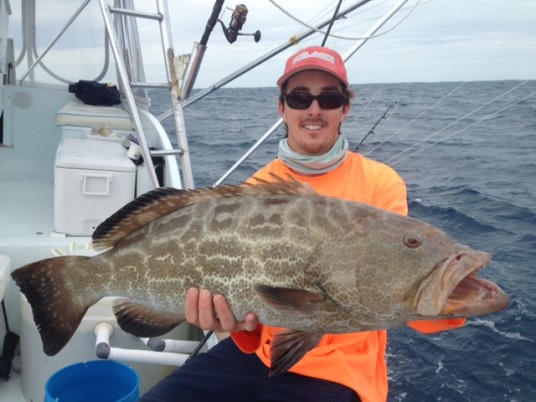
While i was diving on a wreck in 110′ the other day, I came across a big dead black grouper that was half buried in a hole. He hadn’t been dead very long,as he still had color and none of the other reef critters had come to feast on him. I was intrigued by the giant fish half poking out of the hole, stiff as a board, and pulled him out of the wreckage for a closer inspection. Sure enough, he had a big circle hook in the corner of his mouth and a 2′ piece of approximately 50lb leader trailing off. This was one fish that died in battle, but not before he could pull some under-gunned angler’s rig into the wreckage. It was yet another real world reminder that you have to gear up properly for grouper fishing in Miami, FL.
There are several rigs which work well for groupers – most commonly a finder, knocker, or tri-swivel based bottom rig will do the job. It’s important to fish at least 60lb braid with nothing less than an 80lb leader. While you can get away with 60lb flourocarbon, it’s better to be over-prepared than under prepared when it comes to hoisting groupers off the bottom before they can reach structure. Groupers instinctively make a dive for cover upon being hooked, which means you need to use gear that can effectively prevent the fish from running away while not breaking the line. While this dictates the use of heavy main line, leader, and stout hooks that won’t straighten out under pressure (typically 3X strong circle hooks in 7/0 or bigger) – the reel and rod is what will give you the upper hand. You need massive stopping power when it comes to catching big groupers – a drag which can prevent a fish from running into cover can save the day. Make sure you invest in high quality conventional reels in order to maximize drag power. As far as a rod is concerned, you need a blank which is stout and durable – designed specifically for 30 to 50lb class fishing if not heavier. Don’t go overboard here and show up with a tuna stick, but make sure you select a rod which is built specifically to battle groupers and lift them clear of structure which can cut line in a split second.
Why pole when you can troll?
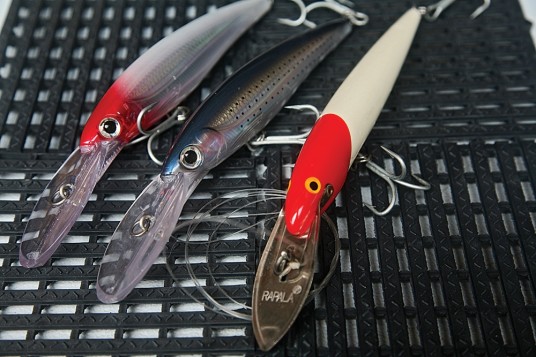
Grouper trolling has become exceptionally popular in Miami. It’s a relatively easy tactic to catch decent size Gag groupers on shallower patch reefs. A standard 50lb trolling outfit will do the job. Make sure you’re using a strong shock leader of approximately 25′ connected by crimps to 100lb ball bearing swivels (use the same outfit you would use when trolling for bull dolphin offshore). Some of the most popular lures for grouper trolling in Miami, FL include Mann’s stretch 20’s, Rapala Magnums, and Yo-Zuri’s in pretty much the largest size available.
It’s best to use one rod when trolling for grouper, unless you’re feeling somewhat adventerous and are confident you can keep the plugs far enough apart as to avoid snagging and wrapping up the lines. We typically troll between 20′ and 30′ of water along the patch reefs, working the sand immediately next to the reefs/rocks which are widely scattered from Fowey Rocks south. Many charter boats enjoy decent success trolling for grouper off Key Biscayne, and will often work their way from Government cut south to Fowey before doubling back. The best practice here is to make sure your lure is just grazing the bottom – the lure should swim as close to the sand as possible, bumping the bottom occasionally but not getting thoroughly hung up. If you snag the bottom occasionally, you’re doing it right. If you’re tolling on the sand, there’s really nothing to snag – if you’re trolling too close to the rocks, it’s likely you’ll lose your lure. Grouper have excellent vision and are pretty quick to dart out and grab a plug – if you’re within 15 feet of the rocks, you’re in the right range. Make sure to cover as much area as you can, typically trolling at 5 to 7 knots the entire time. There’s no mistaking a grouper bite on the troll as they eat aggressively – keep the boat in gear to make sure the fish is clear of the structure then fight as you normally would.
Grouper trolling is an excellent alternative to bottom fishing for grouper if the current is slow and the reef bite just doesn’t seem to be happening. While it’s a bit more expensive to leverage this tactic due to fuel costs, it can certainly help to catch multiple fish in a day by covering lots of ground.
Bait and Switch
Using live bait for grouper is a given. While you can catch them on dead baits like ballyhoo or sardines, there’s just no substitute for a panicking injured baitfish. If we’re targeting groupers specifically on a trip, we will bring a selection of baits to make sure we can offer a wide menu. We find that pinfish, goggle eyes, and big pilchards work best for grouper in the summer months, but grunts and blue runners are a close second. Bridling bottom baits is a must as groupers tend to engulf their prey rather than bite it. A bridled bait will set much more effectively in the mouth of a big fish and there’s less chance of the hook tearing out of the bait upon impact.
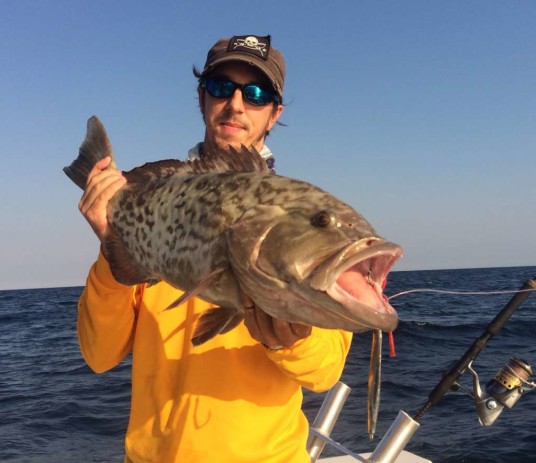
If you’re anchored up on an area and the grouper bite is consistent, you might consider tossing a few chunks into the water to get fish fired up while vertical jigging. Cut baits settling to the bottom will bring groupers out of their hiding spots and can put them in proximity to your live baits. Chunking also brings all kinds of other species into the fold, which can be an added bonus. While chunking, we’ve been known to drop a vertical jig and work the bottom with great success. Vertical jigs are excellent for grouper if you’re anchored, as the appearance of the jig bouncing a few feet off the bottom then fluttering back down provides an excellent presentation. Don’t hesitate to switch up the baits you’re using while fishing for grouper in a specific area (i.e. at anchor) – use frisky live baits as much as possible but switch it up to jigs tipped with dead bait every once in a while. You might just be surprised at the results.
Don’t Discount the Drag
This is the one mistake that most grouper fishermen make. Using heavy drag means more pressure on you, but it’s necessary to prevent fish from diving into the bottom structure. Most of the serious groper fishermen I know fish heavy tackle with locked down drags – preventing fish from gaining even an inch. Often they will drop baits to the bottom and keep the line completely slack so they can feel the bite, then wind tight and hold on with all their might. That first engagement in battle with a grouper is punishing, but you only have a few seconds to get them clear of the bottom structure or you will lose the fish. If you’re fishing heavy gear, you don’t have to worry about breaking the line – only pulling the hook. If you’re using circle hooks, it’s very unlikely the hook will pull. Your best bet is to fish with a locked down or almost locked down drag – putting maximum pressure on the fish at all times. If you can get a grouper clear of the bottom, your chance of landing the fish is much much stronger. Take a “no mercy” approach when it comes to applying drag pressure for groupers – just make sure your tackle can withstand the stress of the bite and fight.
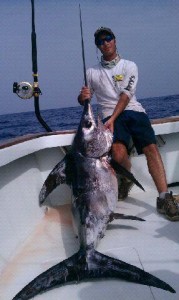
Capt. Charlie Ellis

Latest posts by Capt. Charlie Ellis (see all)
- Curious how to catch or buy live bait in Miami, Florida? Here’s what you need to know! - October 28, 2016
- A Legacy of Venice Louisiana Tuna Fishing - April 7, 2015
- Four Miami, FL Fall Fishing Tips - September 2, 2014
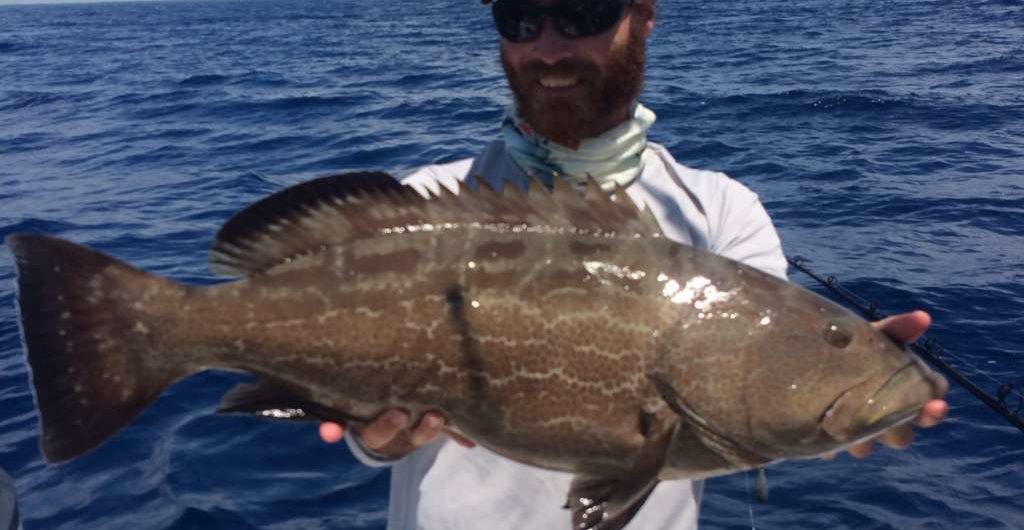
Comments